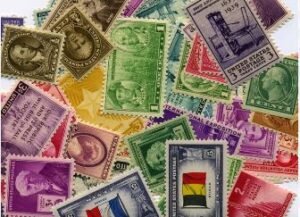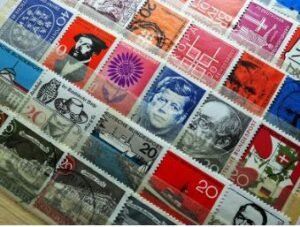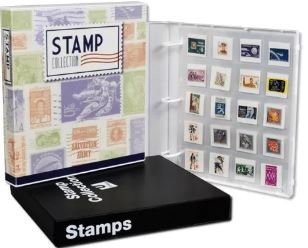Understanding Stamp Catalogs: A Beginner’s Guide for anyone new to the world of stamp collecting, understanding stamp catalogs is essential to navigating the vast and fascinating realm of philately. Stamp catalogs are your roadmap to the hobby, providing essential information about the stamps you collect, including their history, value, and identification. In this beginner’s guide to understanding stamp catalogs, we’ll take a detailed look at how these catalogs work, why they’re indispensable to collectors, and how you can use them to enhance your collection.

What is a Stamp Catalog?
A stamp catalog is a comprehensive guidebook or reference tool that lists and categorizes stamps by country, type, and issue. These catalogs provide details such as the stamp’s design, printing details, dates of issue, and market value. Essentially, they serve as an essential tool for collectors, dealers, and anyone interested in understanding the world of stamps.
Understanding stamp catalogs is a critical skill for anyone starting out in philately. They help you organize your collection, track the value of stamps, and gain a deeper knowledge of their historical and artistic significance. Without a stamp catalog, a collector might find themselves lost in a sea of stamps without a clear framework for identifying and valuing their pieces.
Why Are Stamp Catalogs Important for Collectors?
As a beginner, you might wonder why understanding stamp catalogs is so important. Here are some key reasons why these catalogs are vital to your stamp-collecting journey:
- Identification of Stamps: Stamp catalogs help you identify stamps, especially when they are obscure or foreign. They provide images and descriptions that make it easier to recognize the stamp you have in hand.
- Understanding Stamp Values: The value of a stamp can fluctuate depending on various factors, including rarity, condition, and demand. Stamp catalogs provide an estimated market value, helping you gauge whether your stamps are worth investing in or selling.
- Organization: Catalogs help you organize your collection by country, series, and other categories, making it easier to track what you own and what you need.
- Historical Context: Many catalogs include historical notes about the stamps’ origin, production process, and significance. This can help you understand the historical importance of the stamps in your collection.
- Market Trends: Advanced catalogs provide information on how stamp prices have changed over time. This can give you an understanding of market trends and help you make informed decisions about buying, selling, or trading stamps.

How to Use a Stamp Catalog
Now that you understand the importance of understanding stamp catalogs, it’s time to learn how to use them effectively. Here’s a step-by-step guide for beginners:
1. Choose the Right Catalog
There are several types of stamp catalogs available, each catering to different needs and preferences. As a beginner, it’s essential to choose the right catalog based on your collecting interests:
- General catalogs: These cover a broad range of stamps from all over the world. Popular catalogs like the Scott Standard Postage Stamp Catalogue or the Michel Catalogue are ideal for collectors who are interested in stamps from multiple countries.
- Specialized catalogs: If you focus on a specific country or theme (such as U.S. stamps or stamps featuring animals), a specialized catalog will provide more detailed information about those stamps.
As you build your collection, you may find that different catalogs are useful for different purposes. For example, a general catalog might help you get started, but a specialized catalog might be necessary for more in-depth research.
2. Learn the Terminology
Understanding stamp catalogs also means understanding the language used in them. Some of the most common terms you’ll encounter include:
- Mint: A stamp that has never been used or hinged. It is in its original condition and retains its full value.
- Used: A stamp that has been canceled or marked by the postal service, indicating it has been used.
- Rare: A stamp that is difficult to find due to limited production or surviving examples.
- Varieties: Stamps that have differences due to printing errors, color variations, or slight design changes.
By familiarizing yourself with these terms, you’ll be able to read through a stamp catalog more effectively and understand the details provided.

3. Locate Stamps by Country and Issue
One of the primary ways that stamp catalogs are organized is by country. When understanding stamp catalogs, you’ll often start by looking for stamps from a specific country. Each catalog will list stamps from each country in chronological order, beginning with the earliest issues. Once you’ve located the country in the catalog, you can start to search for your specific stamps based on year, design, or issue.
For example, in the Scott Catalog, each country is given a unique number, making it easy to find stamps from that country. You’ll also find information about the stamps’ design, printing methods, and their current value.
4. Check the Stamp’s Condition
Condition is one of the most important factors when it comes to a stamp’s value, and a catalog will often provide a scale or description to help you assess the quality of your stamps. The condition can significantly affect a stamp’s price—mint condition stamps are worth more than used or damaged ones.
When understanding stamp catalogs, you’ll learn about the grading system, which can range from “mint never hinged” (MNH) to “poor” condition. Most catalogs will include photos and descriptions to help you accurately assess your stamps.
5. Consult Value Listings
One of the most valuable aspects of stamp catalogs is their price listings. These price listings give an estimated value based on factors such as rarity, demand, and condition. When you look at the prices, keep in mind that catalog prices are generally retail values and may not reflect the actual market price, which can fluctuate.
As a beginner, understanding these values can help you make informed decisions when purchasing stamps for your collection or when you are looking to sell stamps. Over time, you’ll learn how stamp prices evolve, allowing you to keep your collection’s worth up to date.

Common Mistakes to Avoid When Using a Stamp Catalog
As a beginner, there are a few mistakes you’ll want to avoid when understanding stamp catalogs:
- Overestimating Value: Catalog prices are often higher than what you might get in the real market, especially if the stamp is common or in poor condition.
- Not Considering Condition Enough: Condition plays a huge role in a stamp’s value. Be sure to carefully assess the condition of your stamps before relying on the price in the catalog.
- Not Using Multiple Sources: A single catalog might not be enough to fully understand the value or history of your stamps. It’s a good idea to consult several catalogs, especially if you are looking for specialized information.
- Ignoring Historical Context: Sometimes, the value of a stamp can be tied to its historical context, which catalogs often provide. Understanding why a stamp was issued or the circumstances surrounding its design can add to its appeal and value.
Conclusion
In conclusion, understanding stamp catalogs is an indispensable skill for any stamp collector, especially beginners. These catalogs are the cornerstone of any successful collection, helping you identify, value, and appreciate the stamps you acquire. Whether you’re just starting or have been collecting for years, using stamp catalogs will enrich your knowledge and passion for the hobby. With the right tools and a little practice, you’ll be well on your way to building a valuable and meaningful collection.



